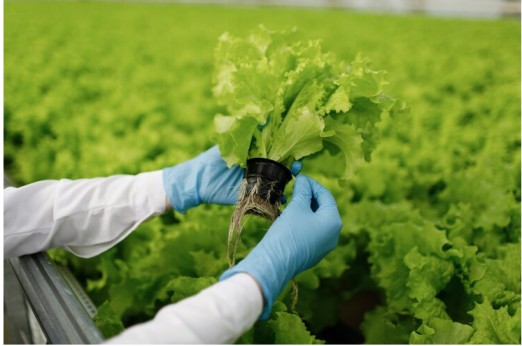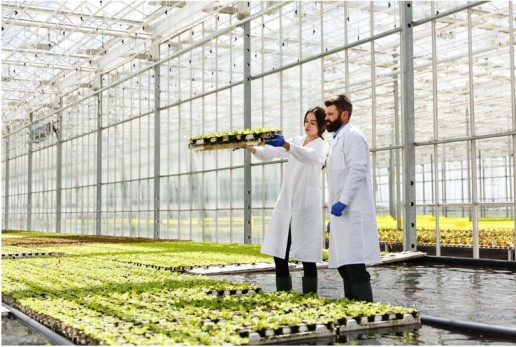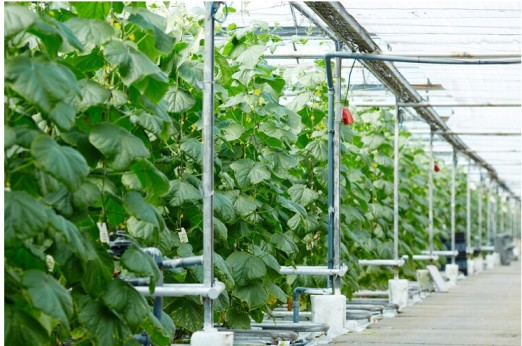In a world where sustainable agriculture is becoming an increasingly pressing concern, innovative farming methods are taking root. Vertical farming, with its space-saving and eco-friendly approach, has been a game-changer.
However, there’s a twist in this modern agricultural tale, and it goes by the name of “aeroponics towers.”
These soaring pillars of greenery are reshaping the way we think about farming, offering not just a solution to space constraints but also an aesthetic and efficient farming experience that’s nothing short of beautiful.
A Revolution in Agriculture
Vertical farming is a concept that’s been on the rise, especially in urban environments where space is limited, and the need for fresh, locally sourced produce is high.
Traditional soil-based farming has its limitations in urban settings, leading to increased reliance on food transportation over long distances.
Vertical farming, however, makes use of vertical space to create multi-layered farms that maximize yield per square foot.
But what sets aeroponics towers apart is their unique approach to nurturing plants. While vertical farms typically use hydroponics (a that grows plants in nutrient-rich water without soil), aeroponics takes it a step further.
Instead of a water-based , aeroponics employs a mist of nutrient-rich water and air to cultivate plants.
This innovative method is what brings a twist to vertical farming, offering numerous advantages over other s.
The Essence of Aeroponics

The beauty of aeroponics lies in the simplicity and efficiency of its design. Aeroponic towers are typically vertical structures with multiple levels or shelves, where plants are suspended in a way that allows their roots to be misted regularly with a nutrient solution.
This misting process provides essential nutrients and hydration directly to the plant roots, promoting rapid and robust growth.
1. Water Efficiency: One of the most significant benefits of aeroponics is its water efficiency. Traditional soil-based farming can be quite wasteful when it comes to water consumption.
In contrast, aeroponics uses up to 95% less water while ensuring that the plants receive the moisture they need to thrive. This makes it an eco-friendly and sustainable choice, particularly in regions with water scarcity.
2. Nutrient Uptake: In an aeroponic , plant roots are exposed to oxygen and nutrients at all times.
This constant supply of oxygen enables the plants to absorb nutrients more efficiently, resulting in faster growth rates and higher yields. As a result, aeroponic towers produce healthier and more vibrant crops.
3. Space Optimization: The vertical design of aeroponic towers takes the idea of vertical farming to new heights.
With crops growing on multiple levels, a relatively small footprint can produce a substantial quantity of food. This makes it a perfect solution for urban environments and small spaces.
4. Reduced Pesticide Use: Because plants in an aeroponic are isolated from soil, they are less susceptible to soil-borne diseases and pests.
This reduced vulnerability means that growers can use fewer pesticides or even transition to organic and pesticide-free farming.
5. Year-Round Farming: Aeroponics is not bound by seasonal limitations. These s allow for year-round farming, enabling growers to provide fresh produce consistently, regardless of the external climate or weather conditions.
The Beauty of Growing Vertically
Aeroponics towers do more than just provide a practical approach to farming; they add an aesthetic dimension to the concept of urban agriculture. Imagine a tall, gleaming tower filled with a variety of lush, green plants.
These towers not only serve as sources of fresh produce but also as beautiful living installations that can enhance urban landscapes.
Their vertical nature means that aeroponic towers can be integrated into both indoor and outdoor settings, bringing a touch of nature to urban environments.
These green towers can be designed in various shapes and sizes, making them adaptable to a wide range of spaces.
Some towers are transparent, allowing people to see the growth process up close and appreciate the beauty of the plant life within.
The inherent beauty of aeroponic towers doesn’t just stop at aesthetics. It extends to the satisfaction of growing your food, knowing that it’s pesticide-free, locally sourced, and as fresh as can be.
The connection between humans and their food sources is rekindled, and the result is not just delicious produce but also a sense of accomplishment and a deeper appreciation for the environment.
Cultivating the Future

As the world continues to grapple with the challenges of urbanization, resource scarcity, and climate change, innovative farming methods like aeroponics are gaining prominence.
The beauty of aeroponic towers is not just in their outward appearance but in the sustainable, efficient, and eco-friendly way they contribute to our food production s.
The twist in vertical farming, with the introduction of aeroponics, showcases the human ability to innovate and adapt to evolving challenges.
It offers a glimpse into the future of agriculture, where we can have our urban jungles and lush greenery too.
Aeroponics towers are more than just a means of growing food; they represent a sustainable way of life, where beauty and practicality coexist. Explore more about sustainable urban farming on the United Nations’ Food and Agriculture Organization (FAO) website.
In Conclusion
Aeroponics towers bring a breath of fresh air, quite literally, to the world of agriculture. Their innovative approach to nurturing plants, along with their aesthetic appeal, sets them apart as a symbol of sustainable farming in urban environments.
These towering beauties are not just a twist on vertical farming; they are a transformative force that’s reshaping the future of how we grow and appreciate our food.
As we continue to explore and refine these s, we are cultivating a more sustainable, efficient, and beautiful world for ourselves and future generations.

